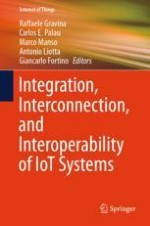This edited book investigates the lack of interoperability in the IoT realm, including innovative research as well as technical solutions to interoperability, integration, and interconnection of heterogeneous IoT systems, at any level. It also explores issues caused by lack of interoperability such as impossibility to plug non-interoperable IoT devices into heterogeneous IoT platforms, impossibility to develop IoT applications exploiting multiple platforms in homogeneous and/or cross domains, slowness of IoT technology introduction at large-scale: discouragement in adopting IoT technology, increase of costs; scarce reusability of technical solutions and difficulty in meeting user satisfaction.
